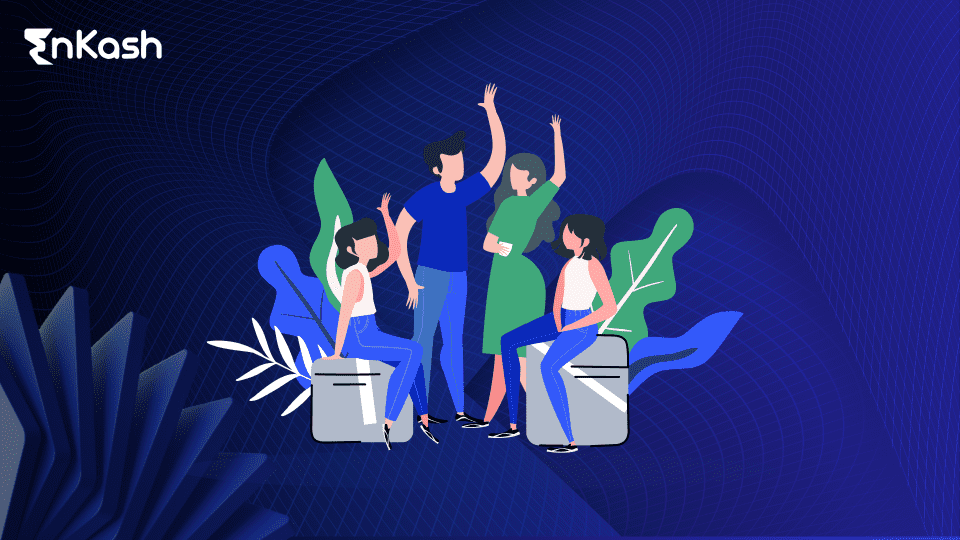Employee leave policies play a significant role in the work culture of India. They are designed for a healthy work-life balance that enables workers to balance personal needs without compromising with professional commitments. Different types of leave are available to every employee, such as Privilege Leave, Casual Leave, Study Leave, etc., which serve unique purposes and are governed by their own set of laws. Both employees and employers need to have a clear understanding of these leaves to ensure compliance with the labor law and maintain a healthy work environment. This blog offers a detailed overview of the different types of leaves in India, the laws governing them, and practical advice on the application and management of these leaves.
Introduction: Understanding Employee Leaves in India
There are different types of leaves in India for personal or professional needs. These leaves allow the employee to take a break when required without risking their employment. The leaves are not a mere formality but a vital link in work and life balance. The most common leaves are Privilege Leave, Casual Leave, Study Leave and others.
In India, the employees’ leave policy is regulated by various labor laws enacted to protect the rights of employees and provide a window of time for them to relax, recuperate, attend to personal issues, or pursue higher studies. Alongside the statutory requirement, companies also provide for various other types of leaves or higher leave entitlements to attract and retain talent.
The Importance of Effective Leave Management
Effective leave management ensures harmony within the workplace. It prevents situations where sudden leaves are taken without proper notice, resulting in disorganized workflows due to an uneven distribution of tasks. The absenteeism rate is higher in companies where leave policies are not in place or where such policies are not explained clearly. Poor management of leaves can also lead to breaches of laws designed to protect employee rights.
Common Categories of Leave
Paid leave is classified into three major types: Privilege Leave, Casual Leave, and Study Leave, while unpaid leave can be granted at the employer’s discretion.
What is Privilege Leave?
Privilege Leave or Earned Leave is a type of leave in a company which an employee earns overtime, depending on the days they have worked. This kind of leave is used generally for planned holidays or for personal matters that require time off work. Privilege Leave is essential for an employee to have a balance between work and life and take leave for the required days without losing income.
Accrual and Utilization of Privilege Leave
Privilege Leave is granted as per company policy or statutory requirements and is proportional to the number of months that an employee has spent working for a company. When employees accumulate Privilege Leave, they have the flexibility to plan extended time off, knowing they’ll still receive their normal salary. To use this leave, employees usually need prior approvals from their managers to make sure that their absence doesn’t affect how the business runs.
What is Casual Leave?
Casual leave is a paid leave provided for unpredictable short-term requirements, like sudden personal emergencies or minor health issues. Casual leave is intended for situations that require immediate action and is generally restricted to a specific number of days in a year according to company policy or legal regulations. It allows the employees to deal with unexpected situations without incurring any financial loss. It is a relief for the employees as it does not require any prior notice from their employers; however, they are advised to inform their employers about their Casual Leave as soon as possible. It helps employees address their sudden requirements without hampering work-life balance.
Eligibility and Usage of Casual Leave
Casual Leave can be used by all employees, with the number of days depending on the company policy or statutory requirements. This leave can be claimed as and when needed, and doesn’t require the employer’s prior approval. However, employees should inform their employer as soon as possible to minimize disruption to their work.
The entitlement for Casual Leave is normally anywhere between 10-12 days per year, depending on the organization. It is meant for short-term emergencies and cannot be utilized for long periods of absence. Many companies have certain provisions regarding the number of consecutive days that can be utilized as Casual Leave and also the type of leave for employees that must be utilized for an extended period such as Sick Leave or Privilege Leave. Knowledge of these policies enables you to use Casual Leaves correctly.
Importance of Casual Leave for Employee well-being
Casual Leave is another very important type of leave in a company that enables work-life balance by empowering employees to manage unforeseen personal affairs without unnecessary tensions and stress. This flexibility supports work-life balance and promotes a healthier, more productive workforce. Employers also benefit by reducing absenteeism, enhancing employee satisfaction, and creating a supportive work environment. Casual Leave is a vital component of any leave policy, promoting long-term employee retention and productivity.
What is Study Leave?
In today’s competitive job market, continuous learning is crucial. Study Leave is a type of leave in a company that is granted to employees pursuing further education or training relevant to their job, enabling them to enhance skills without sacrificing employment. It supports career advancement and meeting professional educational requirements. Study Leave offers employees time off to focus on completing degrees, obtaining certifications, or attending specialized training programs, free from work pressures, for a specified period.
Eligibility and Application Process for Study Leave
Study Leave eligibility depends on the job nature and the relevance of the education to the employee’s current role. To apply, employees usually submit a formal request, informing their employers of the course they want to pursue, its duration, and the benefits to both the employee and the company. This proposal may include a study plan and how the coursework will be completed during the leave. Study Leave can be paid or unpaid, depending on company policy. In some cases, employees may need to commit to staying with the company post-study to ensure mutual benefit.
Benefits of Study Leave for Employees and Employers
Study Leave is beneficial for both workers and employers because it encourages continuous learning and further training. It gives employees the chance to acquire new qualifications and upgrade their skills, thereby improving their chances of promotion or changing careers. At the same time, employers also profit from having a more educated and better-equipped workforce. Study Leave also boosts employee retention, as it reflects the company’s commitment to staff growth.
As far as employees are concerned, this period of Study Leave can help them to concentrate on their education, without the distraction of the workplace, and achieve better academic results. From the employers’ perspective, the improved skills of their workforce can improve the competitiveness of their business, and contribute to organizational success. Study Leave can build loyalty and support long-term employee engagement.
Examples of Study Leave Usage
Many organizations offer Study Leave to employees for professional development, allowing time off to pursue advanced degrees or certifications relevant to their roles. This leave benefits both the individual and the organization by enhancing skills and knowledge within the team. For example, teachers often use Study Leave to earn higher degrees or certifications, improving their teaching abilities and boosting the institution’s reputation. Similarly, in sectors like finance and technology, employees may take Study Leave to gain crucial certifications, helping them stay competitive and contributing to the organization’s success.
Other Types of Leaves in India
Besides privilege leave, sick leave, and study leave, there are various other types of leave, such as sick leave, maternity leave, etc. These are mostly paid leaves. Understanding these leaves is essential for employees to manage their leaves better.
Sick Leave
Sick leave is an important benefit that gives a worker time off work to recover from illness or injury. Often paid, this leave can help prevent the disease from worsening and minimize the risk of spreading an illness to coworkers.
The number of Sick Leave days varies depending on company policies and statutory regulations. If employees take sick leave for an extended period, they may be required to present a medical certificate to ensure the leave is used appropriately.
Sick Leave benefits both employees and employers by promoting a healthier work environment and reducing the risk of workplace infections. It also ensures that employees can fully recover before returning to work, which can enhance overall productivity and job satisfaction.
Maternity and Paternity Leave
Maternity Leave and Paternity Leave are two important facilities given by an organization to an employee awaiting the birth of a child. Maternity Leave is given to female employees for the weeks before and after their child’s birth. This period is specifically given away from work to recover from the process of childbirth and care for their newborn. Maternity Leave is usually between 12 to 26 weeks. During this period, part of their monthly salary is paid by the organization. Paternity Leave, available to male employees, enables them to support their partner and bond with their new child.
Some companies also offer Parental Leave, which either parent can use to stay home and take care of their child during the first years of his or her life. During such difficult times, this leave by the employer undoubtedly makes the employees feel at ease and trust them, making the relationship stronger.
Bereavement Leave
Bereavement Leave allows employees to take time off following the loss of a close family member. This leave provides the necessary time to grieve and manage funeral arrangements without work-related stress. Typically, Bereavement Leave lasts a few days and is granted without requiring documentation. During such difficult times, this type of leave in India is a good example of an employer’s sensitivity towards difficulties in life, which will, in turn, aid in building employee loyalty and morale in the company.
Compensatory Leave
Compensatory Leave is granted to employees who work beyond their regular hours or on holidays. The additional time they spend at work can be compensated by taking time off. This type of leave for employees is especially common in places with irregular hours. Compensatory Leave helps workers to have a well-balanced life between work and personal matters.
Unpaid Leave
Unpaid Leave is available when employees need extended time off beyond their paid leave entitlements. While this leave does not include financial compensation, it allows employees to manage personal matters like extended travel, personal projects, or family care responsibilities without risking job security. The provision of Unpaid Leave might promote work gratification and retain employees by facilitating their work-life balance.
Comparison: Privilege Leave vs. Casual Leave vs. Study Leave
Privilege Leave |
Casual Leave |
Study Leave |
For planned vacations or extended personal time off. |
For unforeseen, short-term needs, such as personal emergencies. |
For pursuing further education or professional training. |
Accrued over time, often based on days worked. |
Not accrued, provided as a fixed number of days per year. |
Typically not accrued; granted based on need and relevance. |
Varies. It can be carried over to the next year. |
A limited number of days per year, usually reset annually. |
Duration depends on the length of the course or training. |
Yes, usually requires prior approval. |
Typically flexible, may not require advance notice. |
Yes, often requires formal requests and justification. |
Paid |
Paid |
Can be paid or unpaid depending on company policy. |
Often allowed, with a cap on the number of days. |
Typically, it is not carried forward. |
It is not applicable, as it is granted for specific educational purposes. |
Normally, no documentation is required beyond the application. |
Usually, no documentation is required unless specified by the company. |
It may require proof of enrollment or course details. |
Examples: Taking a long vacation, or attending a personal event. |
Examples: Handling a sudden illness, or dealing with a personal emergency. |
Examples: Enrolling in a degree program, or attending a professional workshop. |
How to Choose the Right Type of Leave
The right type of leave will help you balance both work life and personal life effectively. This is why you need to choose them carefully, assessing a few important factors. Let’s check them out.
Assessing the Need for Leave
The type of leave to be taken depends on the circumstances and the employee’s needs. If it is a planned vacation or something personal that requires a longer time off, then Privilege Leave would be advisable.
Casual leave is meant for unexpected emergencies or short-term requirements. Employees who need to continue their education should take the benefit of Study leave. Employees must carefully analyze their need for leave as it will help them to use leave benefits properly as per their requirements and maintain their work-life balance.
Employees should think about what they want to use the leave for and how long they need to be away from work to decide which type of leave they want to apply for. For example, if an employee wants to take two weeks off for a family vacation, Privilege Leave might be the best type to apply for as it is usually granted for longer periods, and employees often accrue Privilege Leave specifically for planned absences. On the other hand, if an employee needs a few days off to deal with a sudden personal emergency, Casual Leave might be the best type to apply for.
It’s also important for employees to consider the impact of their leave on their work responsibilities. For example, if an employee is working on a major project that demands maximum focus, they might have to plan their leave carefully so that they can be away from work for an extended period without disrupting the project timeline. Under such circumstances, it might be a good idea to discuss the leave plans with their supervisor and arrange to have the work covered by a colleague during their absence.
Understanding Company Policies
Before applying for any leave, it is essential to understand the company’s leave policies. Each organization may have different rules regarding the accrual, application, and approval of leaves. Familiarizing oneself with these policies helps avoid confusion and ensures that the leave is granted without issues. It is also important to note that some companies may offer additional leave types not mandated by law, providing employees with more flexibility.
Employees should review their company’s employee handbook or consult with the HR department to understand the specific leave policies that apply to them. Workers should verify what types of leave they are entitled to, how it is earned, how many days of leave are available, and if there are any restrictions on how leave can be taken. For example, some companies may have a “use it or lose it” policy for Casual Leave, which means that unused leave days are forfeited at the end of the year.
Knowing company policies also helps employees plan their leave more efficiently. For example, if an employee is aware that he has 15 days of Privilege Leave that can be carried over to the next year, he might decide to hold back his leave so he can take a longer vacation later. Similarly, knowing that he has to apply for leave well in advance helps him submit his applications in time, which would reduce his chances of being turned down.
How to Apply for Different Types of Leaves in India
Applying for leave typically involves several steps, depending on the type of leave and the company’s policies. The general process involves applying either on paper or online, and explaining the type of leave, how long it will last, and the reason for it. For leaves like Privilege Leave and Study Leave, prior approval is usually required, while Casual Leave may be more flexible.
Steps to Apply for Leave in a Company
The first step in applying for leave is to determine the type of leave needed and the duration of time off. Then, employees should look over their company’s leave rules to make sure they meet the requirements and know if there are any limits on how the leave can be used. Once this is done, employees can submit a leave application, either in writing or through an online leave management system. In the leave application, you should clearly state the type of leave you are applying for, the dates you wish to take off, and the reason for the leave.
Documentation and Approvals Required
Different types of leave may require different documentation. For Sick Leave, employees may be required to provide a medical certificate if the leave exceeds a certain number of days. This documentation helps ensure that the leave is being used appropriately and that the employee is genuinely unwell.
For Study Leave, employees may need proof that they are enrolled in a course or training program and a study plan showing how they will finish their work while on leave to get Study Leave.
Privilege Leave generally requires no additional documentation beyond the leave application, but employees may be asked to provide a reason for their leave, especially if it is for an extended period.
Tips for Successful Leave Applications
Here are some easy tips to apply for different types of leave in your workplace.
- Apply in Advance: For longer breaks like Privilege or Study Leave, you should send in your leave request well in advance.
- Provide Necessary Documentation: Ensure all required documents are attached to your leave application to avoid delays.
- Communicate Clearly: Discuss your leave dates and reasons with your supervisor and colleagues to prevent any misunderstandings.
- Follow Company Procedures: Follow the company’s leave application process, which includes giving all the necessary details and using the right format.
- Check for Conflicts: Make sure your leave dates do not overlap with critical work responsibilities.
- Be Prepared to Discuss: Be available to address any concerns or questions your supervisor may have about your leave plans.
Conclusion
Understanding the different types of leave in India, such as Privilege Leave, Casual Leave, and Study Leave, is vital for both employees and employers. Effective leave management is crucial for maintaining a productive workforce. Flexible options allow employees to balance personal and professional responsibilities, enhancing satisfaction and retention. Clear communication and fair implementation of leave policies encourage a supportive workplace, promoting a positive and productive work environment.
FAQs
What are the types of leaves in India?
There are different types of leaves for employees in India, namely Privilege Leave, Casual Leave, Sick Leave, Maternity Leave, Paternity Leave and Study Leave. Each type of leave serves a different purpose, from planned leave to short-term emergencies to further education.
How is Privilege Leave different from Casual Leave?
Privilege Leave is earned over time and is meant for planned vacations or other personal matters. Casual Leave is for the more imminent, unplanned needs, such as an emergency. Privilege Leave is often allowed to be carried forward, whereas Casual Leave is usually reset annually and cannot be carried forward.
Can I carry forward my unused leaves to the next year?
Yes, Privilege Leave is generally allowed to be carried forward to the next year. However, Casual Leave and Sick Leave are often reset at the end of the year and cannot be carried forward.
How many days of Study Leave can an employee avail in India?
The number of days of Study Leave given to an employee is based on the policy of the employer and the relevance of the course or training to the employee’s job. Study Leave is usually given for the length of the course and the extent to which it affects the employee’s job.
What is the difference between Sick Leave and Casual Leave?
Sick Leave is for recovering from illness or injury, and it frequently involves a medical certificate. Casual Leave is for short-term, unexpected personal reasons and usually does not involve documentation from the employee unless specified by the employer.
Are the types of leave for employees during notice periods paid or unpaid?
Leave taken during the notice period should be paid if it is Privilege Leave or Sick Leave. However, some employers deduct the leave days from the notice period or treat them as unpaid leave if they fall outside the employee’s accrued leave balance.
How is leave calculated in Indian companies?
Leave is calculated based on the length of service and the company’s policy. For instance, Privilege Leave is usually granted at a rate per month worked, whereas Casual Leave is usually granted per year without accrual.
Can an employer refuse to grant leave?
Yes, employers can refuse leave if there is a conflict with work requirements or if the employee does not qualify for the leave type, but statutory leave entitlements must be allowed. An employer cannot arbitrarily refuse leave.
What is the process for applying for Maternity Leave in India?
A worker who wants Maternity Leave must fill out an application, also including a medical certificate to prove the pregnancy. Maternity Leave can be granted for a period before and after the baby is born, following the law.
Do I need to provide a reason for Casual Leave?
Although Casual Leave is a leave taken for unforeseen circumstances, the company may ask for the reason, especially if the leave is for more than a certain number of days or if it is taken regularly.













